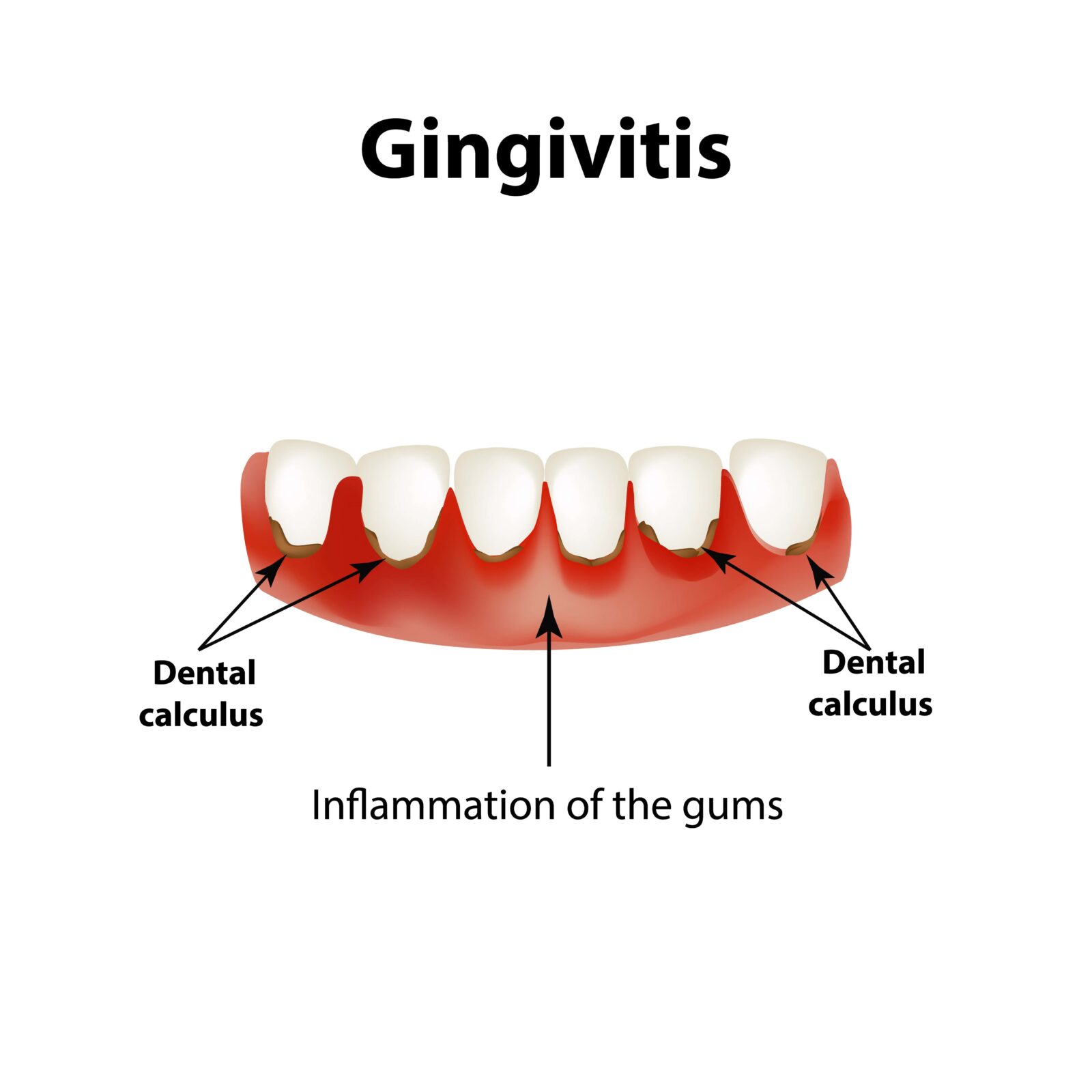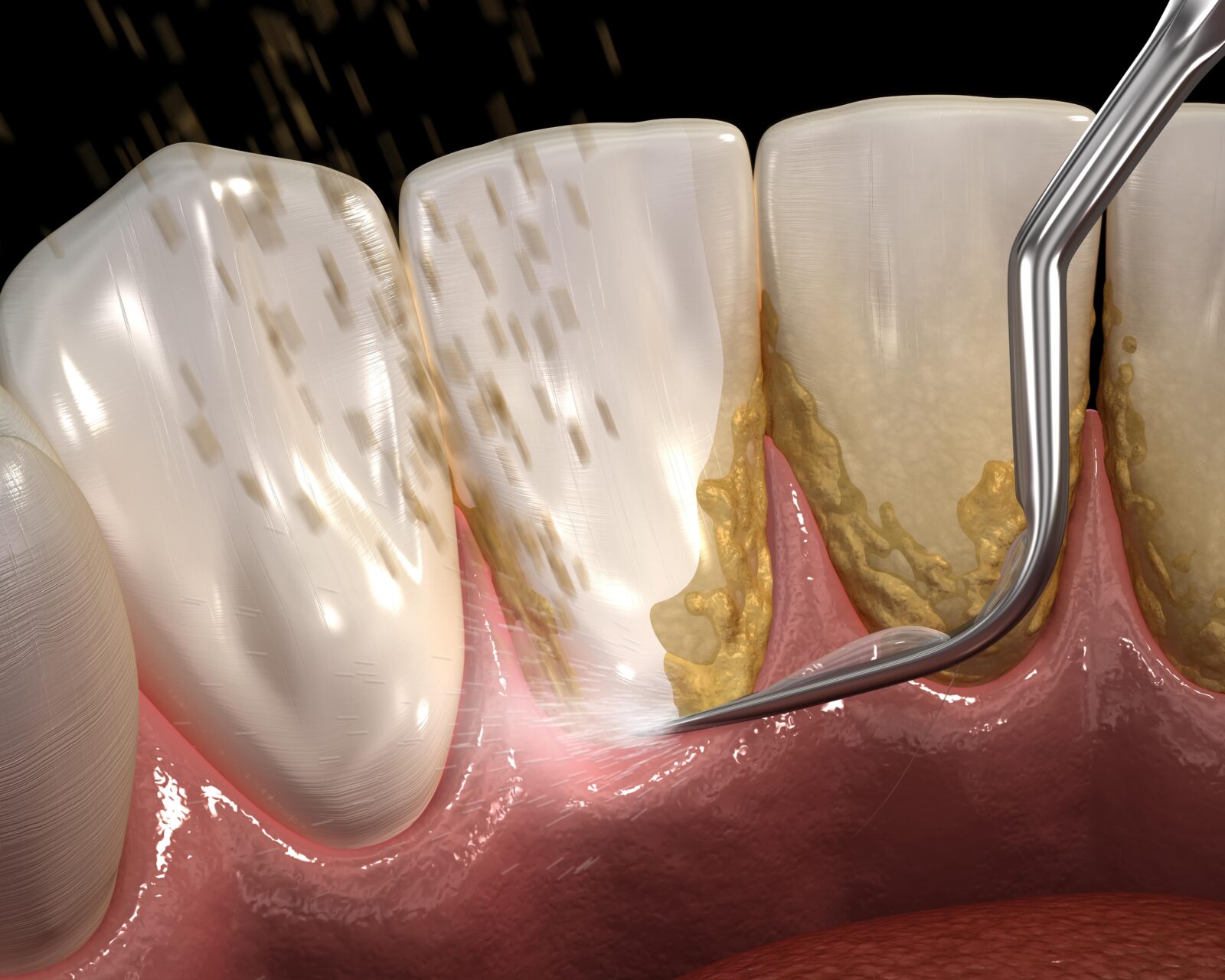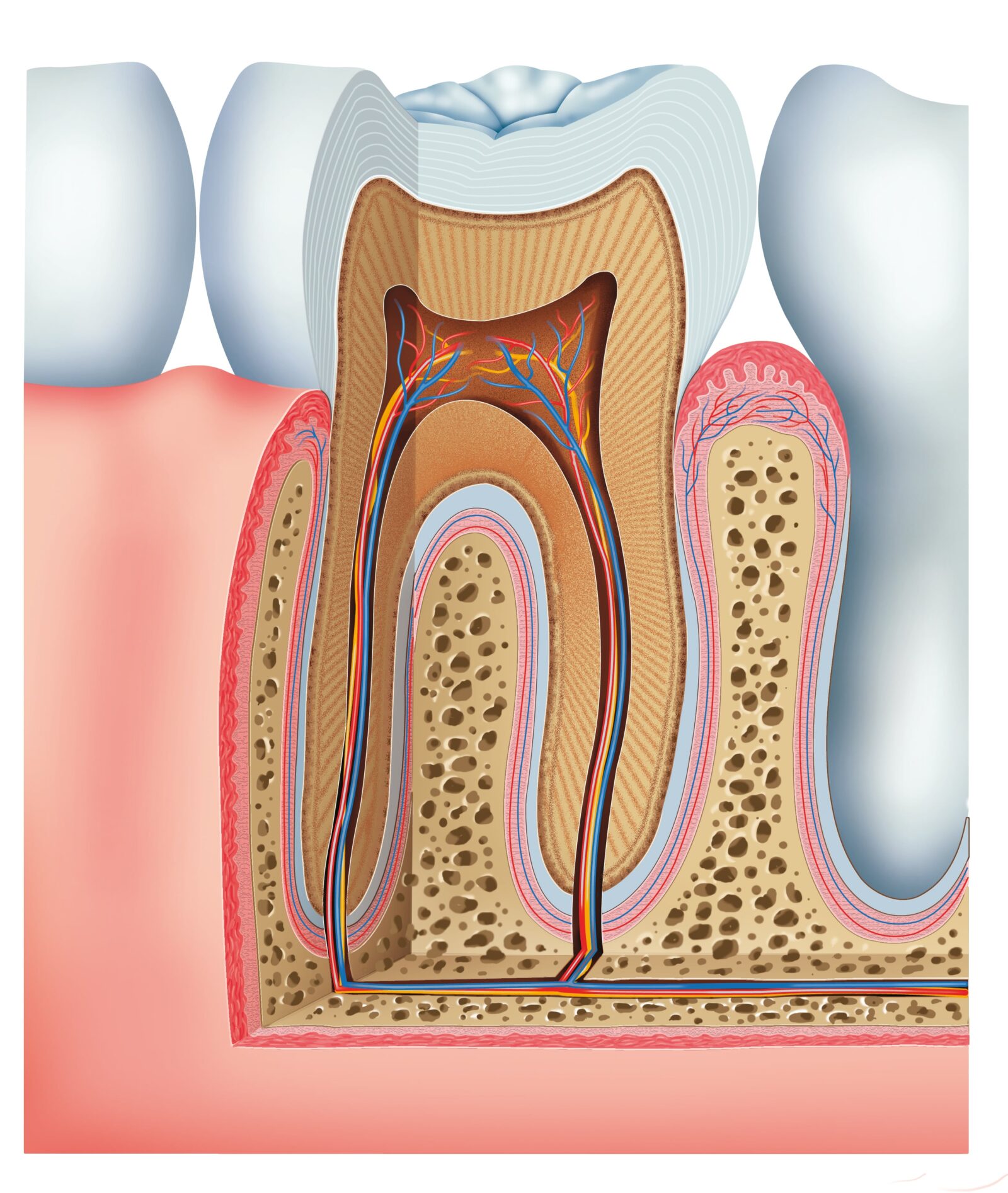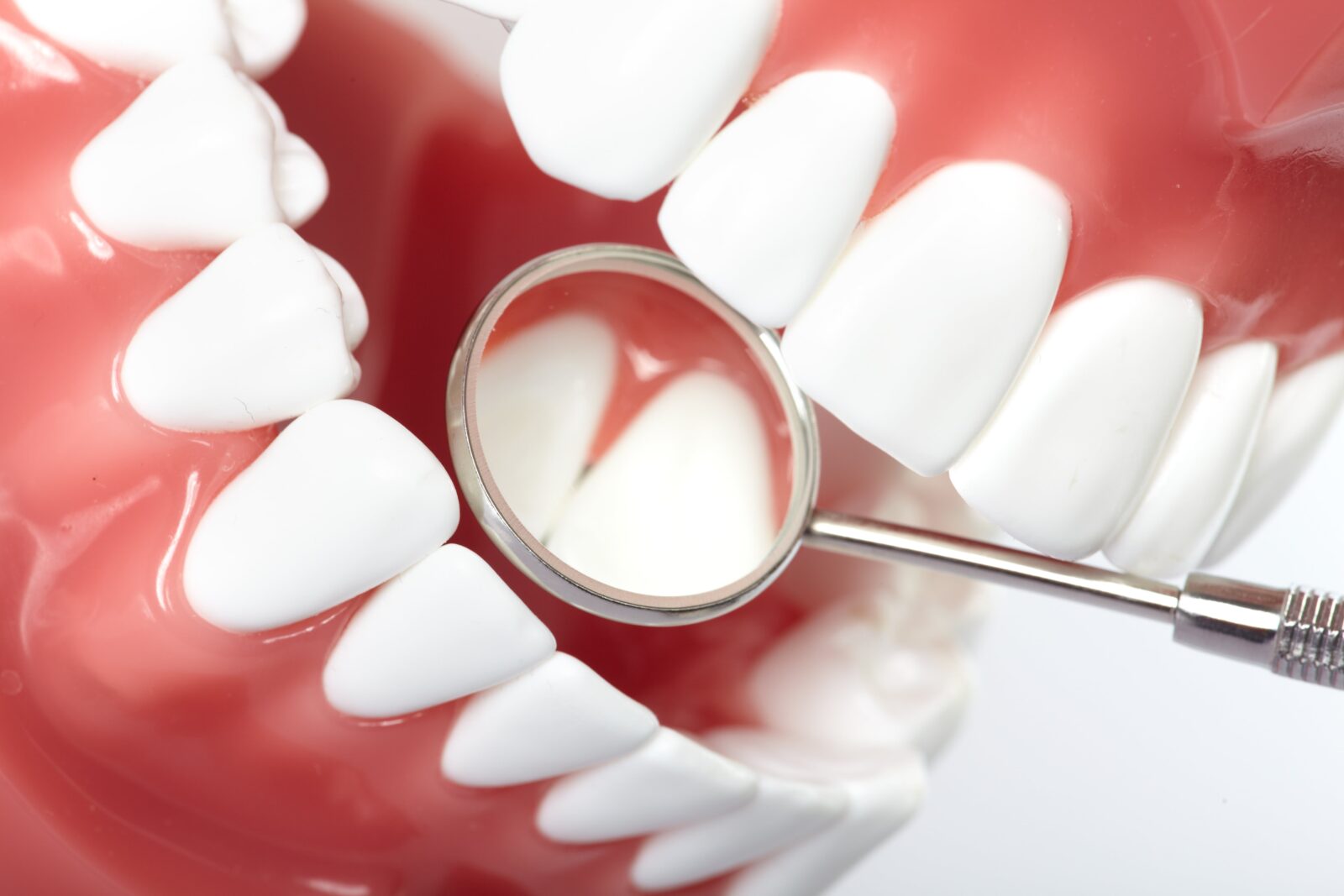Gum health is a cornerstone of oral well-being. When our gums are compromised, it can lead to a host of dental issues, including periodontal disease. One of the most effective treatments for this condition is periodontal scaling and root planing. In this blog, we’ll explore this procedure in detail and discuss the advantages of having it performed by a specialist: a periodontist.
Periodontal Disease: The Silent Threat
Periodontal disease, often referred to simply as gum disease, is a chronic inflammatory condition that affects the gums and other structures supporting the teeth. It’s primarily caused by bacterial infections that result from the accumulation of plaque on the teeth and gums.
Understanding the Progression:

- Gingivitis: This is the initial stage of periodontal disease. It’s characterized by gum inflammation caused by the buildup of plaque at the gumline. If daily brushing and flossing do not remove this plaque, it produces toxins that irritate the gum tissue, leading to gingivitis. The gums might become red, swollen, and bleed easily. At this stage, the damage is still reversible since the underlying bone and connective tissue are intact.
- Periodontitis: If gingivitis is left untreated, it can advance to periodontitis. In this more severe stage, the inner layer of the gum and bone pull away from the teeth, forming pockets. These small spaces between teeth and gums collect debris and can become infected. The body’s immune system fights the bacteria as the plaque spreads below the gumline. Bacterial toxins and the body’s enzymes fighting the infection start to break down the bone and connective tissue that hold teeth in place. If not treated, the bones, gums, and connective tissue that support the teeth are destroyed, leading to tooth loss.
Risk Factors:
While plaque buildup is the primary cause of periodontal disease, other factors can increase the risk or severity of the condition:
- Smoking or tobacco use
- Hormonal changes in women (e.g., puberty, pregnancy, menopause)
- Diabetes
- Medications that reduce saliva flow
- Illnesses that compromise the immune system
- Genetic susceptibility
- Symptoms of Periodontal Disease:
- Red, swollen, or tender gums
- Bleeding gums during brushing or flossing
- Receding gums, making teeth appear longer
- Persistent bad breath or bad taste in the mouth
- Loose or shifting teeth
- Formation of deep pockets between teeth and gums
- Changes in the way teeth fit together when biting
Prevention and Treatment:
The best way to prevent periodontal disease is through proper oral hygiene:
- Brushing teeth twice a day
- Flossing daily
- Regular dental check-ups and cleanings
- Avoiding smoking or tobacco use
If periodontal disease is detected, treatments can range from non-surgical therapies that control bacterial growth to surgery to restore supportive tissues.
Periodontal Scaling: A Closer Look
Scaling is a meticulous process that involves the removal of dental plaque and tartar, not just from the visible parts of the teeth but also from the pockets that form between the teeth and gums.
Periodontal scaling and root planing, often referred to as a “deep cleaning,” is a therapeutic procedure aimed at treating gum disease, especially when it has advanced beyond gingivitis to periodontitis. This procedure is essential for removing bacterial plaque and tartar (calculus) deposits from the teeth, both above and below the gumline, and for smoothing the root surfaces to prevent further bacterial colonization. Here’s a detailed breakdown of the procedure:
1. Assessment and Diagnosis:
Before the procedure begins, a dental professional will typically use a periodontal probe to measure the depth of the pockets between the teeth and gums. Depths greater than 3 millimeters often indicate periodontitis and may require scaling and root planing for treatment.
2. Anesthesia:
To ensure the patient’s comfort during the procedure, local anesthesia is usually administered to numb the sections of the mouth being treated. This makes the process virtually painless.
3. Scaling:
Once the area is numbed, the dental professional will begin the scaling process.

Manual Scaling: Using hand instruments, such as dental scalers and curettes, the dental hygienist or dentist meticulously removes plaque and tartar from the tooth surfaces and pocket depths.
Ultrasonic Scaling: An ultrasonic scaler might also be used. This device uses vibrational energy to break down plaque and tartar and has a water irrigation system that flushes away the debris and cools the instrument.
4. Root Planing:
After scaling, the next step is root planing. This involves:
Smoothing the Roots: The dental professional will smooth out the roots of the teeth to remove any remaining bacterial toxins. This process also makes it more difficult for bacteria to adhere to the roots in the future.
Reducing Inflammation: By removing the sources of inflammation (bacterial toxins), root planing helps reduce inflammation in the gum tissue.
5. Adjunctive Therapies (if needed):
In some cases, additional treatments might be applied:
Antimicrobial Agents: To reduce bacterial colonization, an antimicrobial agent, such as a gel containing antibiotics, might be placed inside the periodontal pockets.
Laser Treatment: Some dental professionals use lasers to aid in removing tartar and reducing the size of periodontal pockets.
6. Post-Procedure Care:
After the procedure, patients might experience some tenderness or swelling in the treated areas. Over-the-counter pain relievers or prescribed medications can help manage any discomfort. It’s also essential to maintain good oral hygiene practices at home to support the healing process and prevent future plaque and tartar buildup.
7. Follow-Up:
A follow-up appointment is usually scheduled a few weeks after the procedure. During this visit, the dental professional will assess the healing of the gums and measure the depth of the periodontal pockets to ensure they are reducing in size and that the treatment was effective.
Why Choose a Periodontist?
A periodontist is a dentist who specializes in the prevention, diagnosis, and treatment of periodontal disease. Here’s why opting for a periodontist can be beneficial:
Specialized Expertise:
Periodontists undergo additional years of training specifically focused on the gums and supporting structures of the teeth. This specialized knowledge ensures a thorough and effective scaling and root planing procedure.
Advanced Techniques:
Periodontists are equipped with the latest techniques and technologies tailored for gum treatments, ensuring a more precise and comprehensive procedure.
Experience with Complex Cases:
Periodontists often handle more severe cases of gum disease, making them well-equipped to address a wide range of periodontal issues, from mild to advanced stages.
Personalized Treatment Plans:
Given their expertise, periodontists can offer a more personalized approach, tailoring the treatment to the specific needs and conditions of each patient.

Comprehensive Care:
Periodontists don’t just focus on the immediate treatment. They provide comprehensive care, from initial assessment to post-procedure follow-ups, ensuring optimal healing and long-term oral health.
Preventive Guidance:
A periodontist can provide insights and recommendations on preventing future gum issues, ensuring patients maintain good oral health post-treatment.
Holistic Approach:
Periodontists often take a holistic approach, considering factors like bone health, potential for gum recession, and the overall health of the oral cavity when planning and executing treatments.
Comfort and Assurance:
Knowing you’re in the hands of a specialist can provide peace of mind. Periodontists often employ advanced pain management techniques, ensuring the comfort of their patients during procedures.
Collaborative Care:
If other dental issues are present, periodontists often collaborate with other dental specialists, ensuring that patients receive comprehensive care that addresses all aspects of their oral health.
Long-Term Health Benefits:
With their in-depth understanding of periodontal disease and its potential systemic links to conditions like heart disease and diabetes, periodontists can offer insights into the broader health benefits of maintaining healthy gums.
While many dental professionals can perform scaling and root planing, the expertise and specialized training of a periodontist ensure that patients receive the highest standard of care, particularly when dealing with advanced or complex periodontal issues.
In Conclusion
Periodontal scaling and root planing are more than just deep cleaning procedures. They are vital interventions that can halt the progression of gum disease and pave the way for improved oral health. And while many dental professionals can perform these procedures, the expertise of a periodontist ensures that you’re getting the best care possible. If you’re concerned about your gum health, don’t wait. Seek out a periodontist and take the first step towards a healthier smile.







